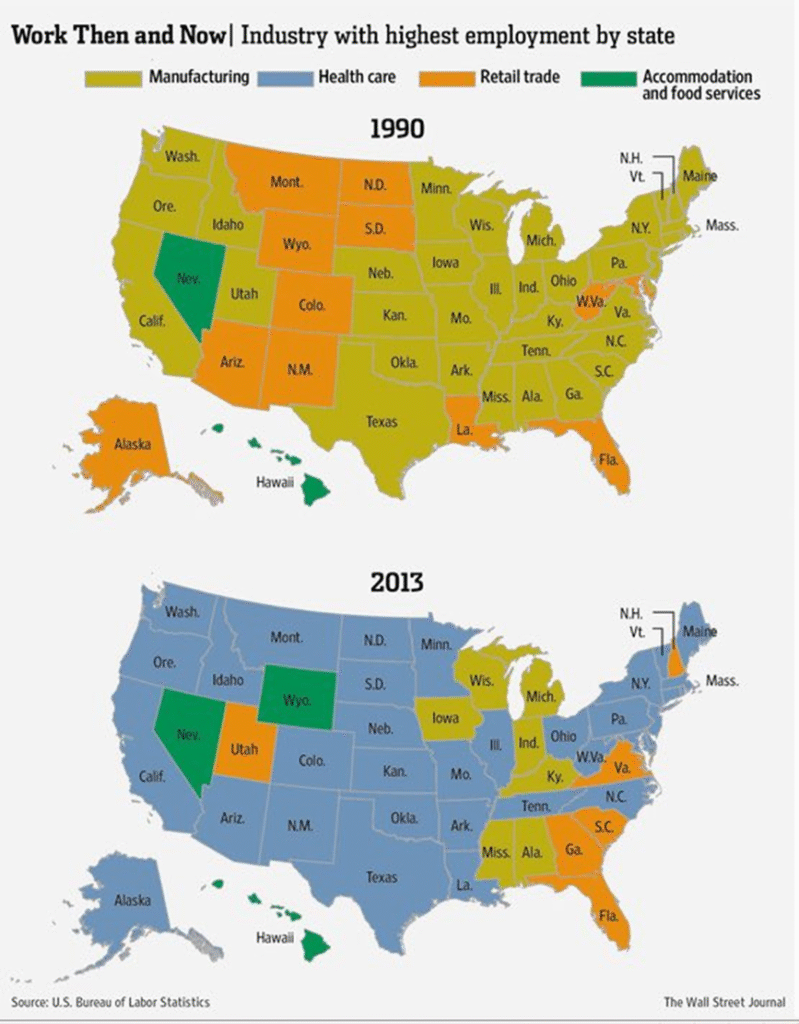If your main activity is getting health care, it suggests that you are very sick.
If the industry in your state providing the most employment is health care, it suggests that the population is extremely unhealthy. That would be most states, as the figure shows.

In 1990, the highest employment numbers in most states were in manufacturing, and health care was not the predominant industry in any. In 2013, manufacturing predominated in only seven, and health care in the majority.
The outsourcing of manufacturing—even of essential drugs and medical supplies—has not reversed.
The population is aging, so more people are receiving actual medical services. But the “health care” sector is not primarily doctors and nurses providing care. It’s middle managers doing coding, billing, quality metrics, and compliance. According to Anthony DiGiorgio, D.O., “Our entire economy is comprised of middle management jobs that don’t actually produce anything.”
And how are these managers being supported—by the remnant of the population that grows, mines, makes, repairs, or builds things? Largely by financial manipulations and debt.
What does this portend for the health status and life expectancy of the nation?
Despite the high employment numbers in the health sector, there may be looming shortages of doctors and nurses. In the economy as a whole, there is an urgent need for 500,000 electricians, according to Larry Fink, CEO of BlackRock, while more than 2 million young men are now classified as NEET—meaning not in employment, education, or training.
The “health care sector” appears to be part of the illness, not the remedy.
Additional information:
- The Unaffordable Care Act: the Gift That Keeps on Taking, AAPS, Nov 20, 2015
- The Medical Care Wheel of Misfortune, by Marilyn Singleton, M.D., J.D., Sept 24, 2019
- Turning Point, AAPS News, October 2025.
- Genuine insurance options




